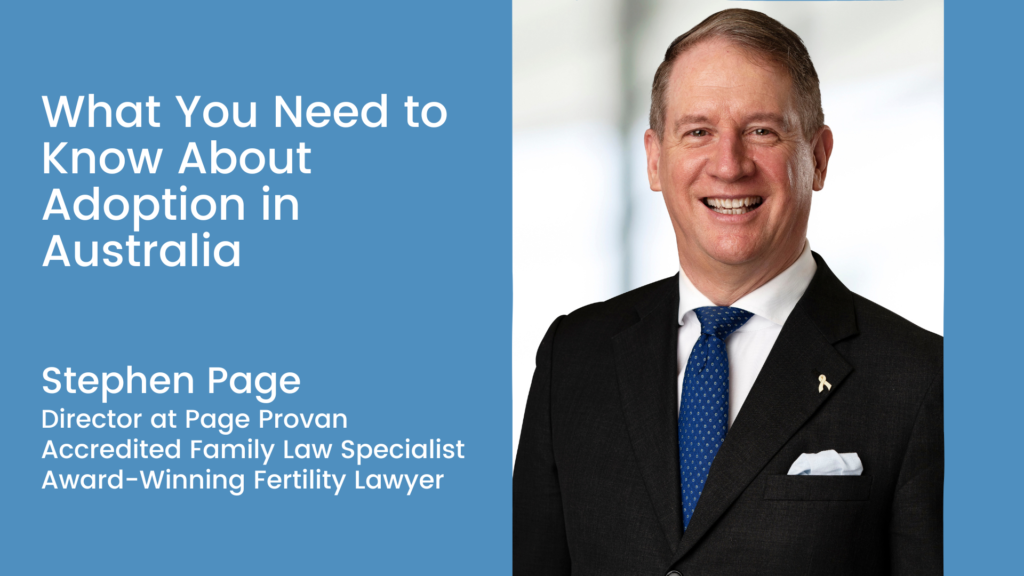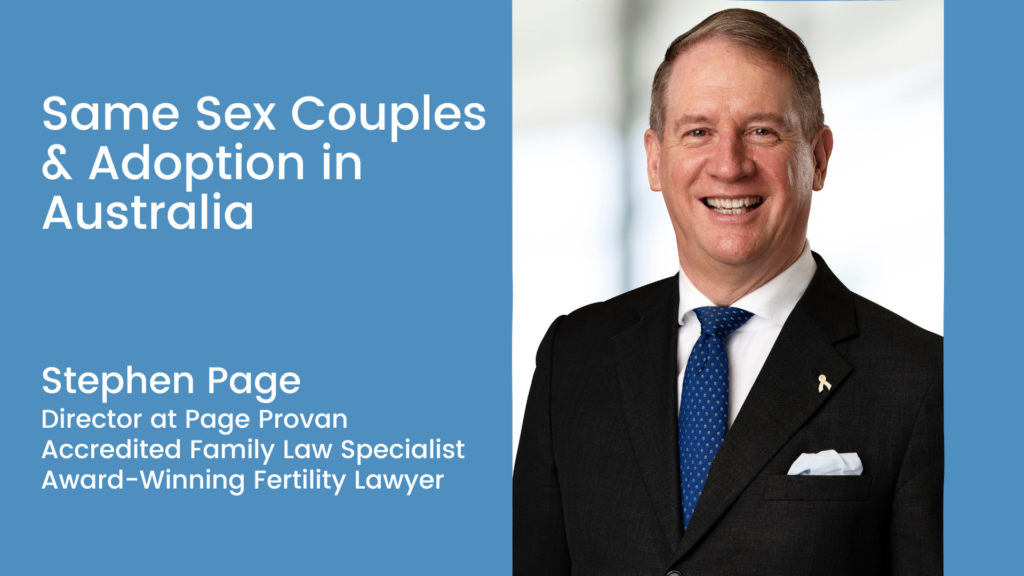The mechanics of a Hague Convention case
What is the Hague Convention?
Australia, along with many other countries, is a signatory to what is commonly called the Hague Convention, which enables children to be returned to their home country when they have been abducted abroad. There many Hague Conventions, but the 1980 one is the one concerning international child abduction. There are two other Hague Conventions that might also apply- one from 1961 and one from 1996. I’m going to focus on the 1996 Convention.
What are Hague Conventions?
Hague Conventions are, not surprisingly, conventions signed at The Hague in the Netherlands. They are written up under the control of the Hague Conference on Private International Law, a body which has been in existence since before World War One. The Hague Conference in turn is comprised of several member States. Australia is one of the oldest members, being a member since before World War One.
What is private international law?
When people go overseas, their legal problems often go with them. The problem is that law in other countries is not the same as the law back home. This is the essence of private international law.
Step one: does the Hague Convention apply in your country?
For the Hague Convention to apply, there must be a wrongful removal of a child from country A to country B or a wrongful retention of the child in country B- in other words it was entirely proper to have removed the child from country A, for example, for a holiday, but the child has been held over. Is your country a signatory? If not, the convention does not apply. Is country B a signatory as well? If not, the Convention will not apply. Both countries need to have signed up. It’s easy to check- just look here or here.
Step 2: has there been a wrongful removal or wrongful retention?
There has to have been a wrongful removal or wrongful retention. Without either of these, the Convention cannot be invoked. For example, some time ago I had a Hungarian case. Hungary allowed a parent to take a child overseas without the consent of the other parent for up to 1 year. What on the face of it was a wrongful removal, on closer checking was not, because the removal was allowed under Hungarian law.
Step 3: when did it happen?
To get the kids back, the wrongful removal or wrongful retention must have happened, and happened within the last year before the application is lodged. A parent who agreed to the children going overseas for a holiday, but the time for the holiday has not expired, means that there is not a wrongful retention yet (and may never be, if the child is returned in time). There are different approaches by courts in different countries about when wrongful retention in particular commenced. Legal advice on the ground in both countries is preferable.
Step 4: is the child 16 or soon to be 16?
If the child is 16 or over, do not go any further, as the Convention does not allow the return of children 16 and older. It can be problematic getting early teens back in any event, as often they may have firm views.
Step 5: the wrongful removal or wrongful retention was in breach of the person’s rights of custody
The parent (or other person who has rights of custody, such as a grandparent), needs to show that they have rights of custody, as defined under the Convention, such as the right to decide where the child lives, and that those rights were interfered with. Most of the time this can be fairly readily established.
Some years ago I had a tricky case between Australia and New Zealand. I acted for the mother, who was seeking that her child be returned to Australia. She was seeking orders against her parents, who had taken the child to New Zealand. Their first defence was that they had rights of custody. Oh dear, if only their lawyers had taken the time to read the Convention carefully. There was no defence. What the grandparents relied upon was an order in New Zealand that said that they had custody of the child. However, the same order said that they and my client had guardianship- which in turn met the definition of cusotdy within the meaning of the Convention.
Step 6: Was the child an habitual resident?
It’s necessary to show that the child was an habitual resident in country A. Most of the time this is pretty easy, but sometimes with people who move around a lot, it can be a lot harder to show.
Going back to my New Zealand case, the grandparents moved around a LOT- between NZ, Australian and Papua New Guinea. They kept one step ahead of my client. As soon as she got close to them and her child, off they would go again. Finally, they moved from New Zealand, settling in Queensland. My client found out, sold her belongings, and came across. She then discovered that just before she came over, they moved again- from southern to northern Queensland- no doubt to prevent her from having contact.
When she finally discovered where they were, my client trekked to north Queensland to discover that they had gone – again. They had gone just 24 hours before she turned up. Their time with the child in Australia had been some 6 months or so- but they had settled in Australia and were not mere tourists.
It was obvious to me that the child was habitually resident, for the purposes of the Convention, in Australia, and ought to be returned to Australia, where my client now lived, she having altered her life to follow him.
I was told by Australian and New Zealand officials that I was in the wrong- because the child came from New Zealand. I was vindicated when halfway through the hearing the New Zealand judge told the grandparents that they could choose to go back to Australia or he could the child returned without them- because the child was habitually resident at the relevant time in Australia. The child came back to Australia- and ultimately into my client’s care.
Step 7: who prepares the documents?
How the Hague Convention works is that the stay at home parent (or other person with custody) fills out forms, and then lodges them with their country’s government, which sends them to the government of the second country, which applies in the court of the second country for the return of the child.
Usually this means that the abducting parent has to spend a lot of money to defend the application, and the stay at home parent does not.
A parent who wants to get their child back is best advised to get a lawyer who has run these type of applications before, like me, to draft their material. While you can rely on the government to do so, it might be slow, and it might miss out on some nuanced point – which makes all the difference.
Step 8: what is the other country like at returning kids?
Don’t make the mistake of assuming that because the other country is a Hague Convention country that the child will be returned quickly. Do your homework. Find out, preferably from a lawyer who has run Hague Convention applications in that country as to what thsat country is like.
Some countries do not grant legal aid on these applications, and require the stay at home parent to fund the legal proceedings for return. If the child has been taken to the US, for example, the stay at home parent in Australia has to pay for the lawyers to have the child returned. This can be very expensive.
The US State Department has a very useful report, setting out where, in US eyes, there is non-compliance. Some countries are very poor at returning children, such as South Africa, as I discovered when I visited there in March.
Step 9: are there any defences?
There are a number of defences or road blocks. Typically they are:
- did the stay at home parent consent or acquiesce to the removal or retention?
- was that parent exercising rights of custody?
- is there a grave risk to the child if the child is returned to that country?
- will the return of the child be in breach of fundamental human rights obligations?
- does the child object to being returned, and has attained an age and level of maturity that the child’s views can be taken into account?
- are there funds to ensure the child can go back (possibly with the abducting parent) and be accommodated and provided for in the first country?
Even if a defence is made out, they can be quite tricky – because aside from the highly technical nature of the case, a defence is discretionary. A parent might have made out the defence, but the judge may make an order in any event for the return of the child.
When a stay at home parent is preparing the application, these defences should be considered- and as best can be – directly answered.
It shows that one must be careful in running a case. Last year the abducting parent (I was for the stay at home parent) was told by an Australian judge that she was “gaming the system” after she had filed in the Australian court a document saying that there was no risk of the children being in the father’s care- no family violence, no child abuse and no risk of either- but had told the New Zealand court that there was “grave risk” in the children being returned in effect ot my client’s care.
Step 10: get the lawyers to speak to each other
In the “gaming the system” case, I was able to speak to the lawyer handling the case in New Zealand. This was very helpful in ensuring the children were returned promptly. Getting the lawyer’s name and contact details were the tricky part- because Australian and New Zealand authorities considered that they should be the sole conduits of information.
Step 11: are there alternative procedures?
With some countries there can be alternative procedures. These should be considered before walking down the path to a Hague Convention application. The alternatives need to be considered, if only to be ruled out.
One alternative might be to rely on the 1996 Hague Children’s Convention, which if it applies can be quicker and more certain.
Alternatives may be more expensive and slower, and less certain (or quicker, cheaper and more certain). What might be legal to do at home (such as grabbing your child back) might result in prison time abroad. Legal advice is needed- again in both countries- before going down the path that Sally Faulkner trod, that resulted in her being detained and then charged.












